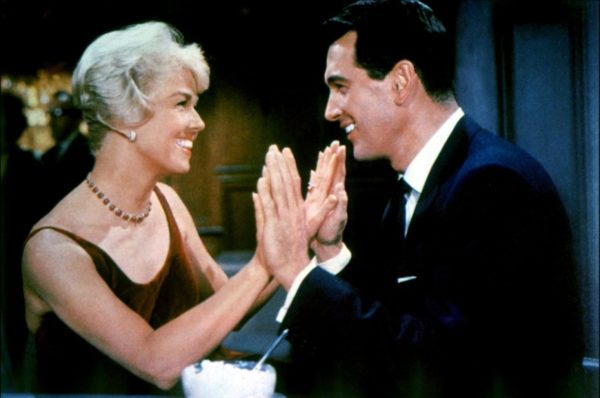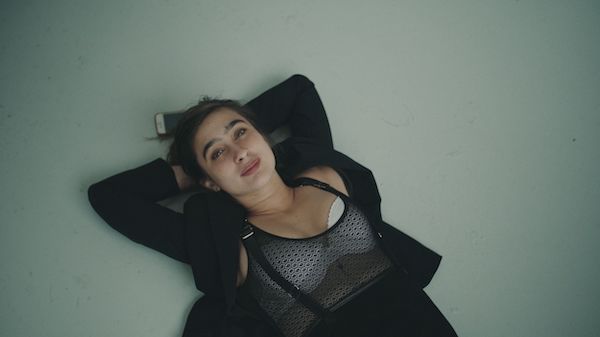Film Reviews: Tribeca Film Fest Docs 2 — A Troubled Swedish Family, Rock Hudson, and More
By David D’Arcy
More reviews of noteworthy documentaries at this year’s Tribeca Film Festival.

A scene from The Gullspang Miracle. Photo: courtesy of Tribeca Film Festival
Every year there are discoveries at Tribeca, and this year one of them was The Gullspang Miracle, a first feature documentary from Sweden by Maria Frederiksson.
The eponymous miracle, which takes place mostly among aged family members, is the reemergence, during a real estate deal, of the twin sister to a sibling who killed herself decades earlier — or at least that’s what the family believes. The Gullspang Miracle begins with the rediscovery of the sister (half-sister actually) that two aging siblings never knew they had. That sister is the twin to the sister who — it had been assumed — committed suicide in 1988. Among the marvels in this film is how the sisters get to know the lost twin. Another part of the miracle: what brought filmmaker Maria Frederiksson to make this unusual documentary, which plays and prods the audience as if it were a family drama.
Olaug is the twin born in 1941 who just happens to be selling an apartment that Kari, one of her two supposed half-sisters, decides to buy. Kari and her other sister, May, see an uncanny resemblance to their late sister Lita — she has everything, including her physical mannerisms. As happens with miracles, the sisters are wonderstruck by it all. Given their own ardent Christian faith, the miracle seems all the more believable, even logical.
There is more to Olaug’s story. A relative explains that her parents feared that the Nazis would take the twins to become part of a scientific experiment. Olaug is sent away into foster care. 80 years later, once she’s welcomed joyously by her half-sisters and meets their family, the initial glow gradually wears off. Olaug tells them that she grew up in an affluent foster family, and makes no secret that she views her privileged heritage — thicker than blood, she seems to think — as preferable to that of her birth family.
As the story moves ahead, we are reminded of playwright Henrik Ibsen’s notion that family secrets are inescapable ghosts. A policewoman tells Olaug that Lita’s death was probably not a suicide. We also learn that Lita was implicated in an embezzlement scandal at work. Was she murdered? It’s a subplot made for a Nordic neo-noir.
As for the suggestion that Olaug’s parents sent her away to keep the Nazis’ hands off their twins, the facts, which aren’t examined in the documentary, probably wouldn’t bear this out. The Germans deported no Norwegian children for experiments, although Norwegian Jews sent to concentration camps could have been used for that purpose.
Eventually, Olaug’s story about being the lost twin sister breaks down. By this point, the miracle of finding a long-lost sibling has become more of a trauma. While the family members mull an unpleasant reality over, Frederiksson has a way of fixing the camera on an image in the landscape — a mountain range, a valley shrouded in fog, an incandescent moon with a reflection on a lake — that stresses the difference between what people in this family believe and what really happened in the past.
The Gullspang Miracle has the feel of a studied, scripted drama, thanks to deft editing and to characters (if that’s right word) who bring a distinct presence to the narrative. Olaug is a secular woman of 80, a retired military officer (promoted for her hardheadedness, we’re told). Her clothes and hair and manner put her at odds with what first promised to be a reunited — and loving — family.
Even the minor players here are memorable. In a massive police headquarters, a uniformed woman investigator is icy as she chronicles the end of Lita’s life on earth. And when Olaug makes an uncomfortable journey to relatives on an isolated farm, her host welcomes her with a barrage of bawdy comments that can be heard by all. And he blithely and innocently delivers his innuendo as if he had been imagined by David Lynch.
Ibsen often ended his dramas with a sense of collapse, a way of reminding his audience that talk, however well-meaning, can’t explain away painful reality or tragedy. Frederiksson lingers on the discomfort of sisters who thought they had found a sibling and were forced to relive the pain of losing another sister. The end of The Gullspang Miracle indicates that there may be more truths hidden away.
I can’t imagine this documentary in Swedish opening commercially, but it will play on the festival circuit. Seek it out.

Doris Day and Rock Hudson in Pillow Talk.
Rock Hudson: All That Heaven Allowed, which premiered at Tribeca and is streaming on Max (HBO), revisits the screen star’s career, his double life in Hollywood, and his years with HIV.
Hudson, born Roy Harold Scherer, was rarely challenged with screen roles that required more than his playing to conventional type. But he gave a great career performance off-screen playing a straight movie star, until that couldn’t be sustained. In some ways he reminds me of his fair-weather friend Ronald Reagan, whose movie roles are mostly footnotes now. Yet Reagan knew what it took to act on the political stage: he once wondered out loud how anyone could be the president of the United States without being an actor. Unlike Elizabeth Taylor, the more gifted screen actress who cuddled with Hudson when he was dying of HIV, Hollywood friends like Ronald and Nancy Reagan avoided the performer at the end, when it would have mattered to him, and to the millions who suffered from HIV.
The doc, inspired by Mark Griffin’s detailed biography and directed by Stephen Kijak, comes long after Mark Rappaport’s clever Rock Hudson’s Home Movies (1992) and Matt Tyrnauer’s tell-all funny Hollywood sexology, Scotty and the Secret History of Hollywood (2017). Relying on a reportorial tone, Kijak chronicles Hudson’s rise to stardom and his career alongside the leading actresses of his day — Jane Wyman, Doris Day, Taylor, etc. (He was married for three years to his agent’s assistant, Phyllis Gates, who emptied her spite into the book My Husband, Rock Hudson two years after his death.) Hudson’s parallel life with men hovered around “The Castle,” his Hollywood home where parties well-known to the press drew screen stars and crowds of beautiful boys.
Much of that not-so-secret side of Hollywood has been documented before — and still exists — but the doc will still reverberate for those who weren’t Hudson watchers. His career took off and soared thanks in great part to Henry Willson, Hudson’s agent, a ruthless promoter of mostly hunky clients like Tab Hunter, Troy Donahue, and others with secrets. Willson, a gay Salieri behind the scenes (the subject of his own trashy, revealing biography), provided the notorious Hollywood tabloid Confidential with dirt on one gay client, Tab Hunter, to buy the magazine’s silence about Hudson’s private life, about which gossip abounded. The undying rumor that Hudson had married Jim Nabors was false.
You don’t get too much in this doc about the films directed by Douglas Sirk (All That Heaven Allows, 1955, and Written on the Wind, 1956) and John Frankenheimer (Seconds, 1966). These efforts challenged and revealed Hudson’s strengths as an actor. That’s a major shortcoming for a film that aims to see him as more than Hollywood’s leading hunk and a prominent victim of AIDS. But Rock Hudson: All That Heaven Allowed does remind us, for better or worse, of an observation by journalist Randy Shilts: “There was AIDS before Rock Hudson and there was AIDS after Rock Hudson.” Celebrity, like it or not, can be leveraged. Hudson, who spent a career turning heads, forced even his friend Ronald Reagan to notice. Another Arts Fuse review
Briefly –

A scene from Apolonia, Apolonia. Photo: Tribeca Film Festival
In Apolonia, Apolonia, from the Danish director Lea Glob, we meet a charismatic young aspiring painter, born in the now-disappearing bohemian theater scene of Paris. Her parents were bohemian enough to have videotaped her conception. Glob is in love with dark-eyed Apolonia Sokol, whom she follows for years — and so, as we see, is everyone else. Apolonia ends up studying at Paris’s Ecole des Beaux-Arts, painting angular figures with hints of Tamara de Lempicka, Blue Period Picasso, and Modigliani. Her teachers tell her that she’s more interesting than her paintings. This film, fresh from other doc festivals and shot like a commercial for its subject, bears that out.
The Fourth Wall, a series seeking distribution, is the story of The Sullivanians, a cult built on psychological and sexual coercion whose members shared apartments on the Upper West Side of Manhattan in the pre-glam ’70s and ’80s. The group was founded by Saul Newton; his son Keith worked with the film’s director, Luke Meyer. It’s a study of young educated people who forfeit their freedom, living in fear of being ostracized by their cult’s leaders. Gentrification drove most of them out of the neighborhood, but for a while they lived amongst New Yorkers. And they performed as an ensemble, at a theater in the East Village, that they seized by force. And that’s just the first episode.
David D’Arcy lives in New York. For years, he was a programmer for the Haifa International Film Festival in Israel. He writes about art for many publications, including the Art Newspaper. He produced and co-wrote the documentary Portrait of Wally (2012), about the fight over a Nazi-looted painting found at the Museum of Modern Art in Manhattan.


I would add on Rock Hudson as an actor that he was fine in Giant and, I just watched it again recently, very smooth and funny in Pillow Talk.